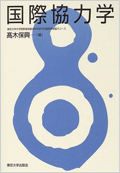8th DOIS Research Seminar: Prof. John Gibson(University of Waikato)
It is difficult and expensive to measure rural economic activity in developing countries. The usual survey-based approach is less informative than often realized due to combined effects of the clustered samples dictated by survey logistics and the spatial autocorrelation in rural livelihoods. Administrative data, like sub-national Gross Domestic Product for lower level spatial units, are often unavailable and informality and seasonality of many rural activities raises doubts about the accuracy of these measurements. In order to overcome these barriers a recent literature argues that high-resolution satellite imagery can be used to measure rural economic activity and can provide indicators of rural living standards. Potential advantages of using remote sensing data include greater comparability between countries irrespective of their varying levels of statistical capacity, cheaper and more timely data availability, and the possibility of extending estimates to spatial units below the level at which GDP data or survey data are reported. While there are many types of remote sensing data, economists have particularly seized upon satellite-detected nighttime lights (NTL) as a proxy for local economic activity. Yet there are growing doubts about the universal usefulness of this proxy, with recent evidence suggesting that NTL data are a poor proxy in low-density rural areas of developing countries. This study examines performance in predicting rural sector economic activity in China with different types of satellite-detected NTL data that come from sensors of varying resolution. We include the most popular NTL source in economics, the Defense Meteorological Satellite Program data, whose resolution is, at best, 2.7 km, two data sources from the Visible Infrared Imaging Radiometer Suite (VIIRS) on the Suomi/NPP satellite which have spatial resolution of 0.74 km, and data from the Luojia-01 satellite which is even more spatially precise, with a resolution of 0.13 km. With this range of resolutions we can ascertain whether better sensors, used by the more spatially precise data sources, lead to more accurate predictions of county-level primary sector GDP. We supplement this statistical assessment with a set of ground-truthing exercises. Overall, our study helps to inform decisions about future data directions for studying rural economic activity in developing countries.




